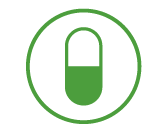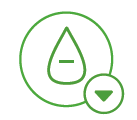American Association of Clinical Endocrinology (AACE) Clinical Practice Guidelines
The Use of Advanced Technology in Management of Persons with Diabetes 2021

The American Association of Clinical Endocrinology (AACE) conducted literature searches for relevant articles published from 2012 to 2021. A task force of medical experts developed evidence-based guideline recommendations based on a review of clinical evidence, expertise, and informal consensus, according to established AACE protocol for guideline development.1
Who benefits from routine use of Continuous Glucose Monitoring (CGM)?

CGM is strongly recommended for all persons with diabetes treated with intensive insulin therapy, defined as 3 or more injections of insulin per day or the use of an insulin pump. Grade A; High Strength of Evidence; BEL 1†

CGM may be recommended for individuals with type 2 diabetes (T2D) who are treated with less intensive insulin therapy. Grade B; Intermediate Strength of Evidence; BEL 1†
When is one method of CGM preferred over the other?

Real time CGM (RT-CGM) is recommended for persons ≥65 years old with insulin-requiring diabetes to achieve improved glycemic control, reduce episodes of severe hypoglycemia, and improve quality of life (QoL).
Grade A; Intermediate Strength of Evidence BEL 1†

RT-CGM should be recommended over Intermittently scanned (IS-CGM) to persons with diabetes with problematic hypoglycemia (frequent/severe hypoglycemia, nocturnal hypoglycemia, hypoglycemia unawareness) who require predictive alarms/alerts; however, the lifestyle of the person with diabetes and other factors should also be considered.
Grade B; Low Strength of Evidence BEL 1†

Reviews have suggested that RT-CGM may be preferred:
- For persons with diabetes who are physically active or have busy lifestyles that would inhibit frequent scanning of anIS-CGM sensor
- Require uninterrupted monitoring by parents/caregivers
- Choose to use advanced insulin delivery technologies(sensor augmented pump or automated insulin delivery system)
- Cannot achieve desired glycemic targets with IS-CGM.2,3

IS-CGM should be considered for persons with diabetes who meet 1 or more of the following criteria:
- Newly diagnosed with T2D
- Treated with non-hypoglycemic therapies
- Motivated to scan device several times per day
- At low risk for hypoglycemia, although desire more data than SMBG provides.
Grade D; Low Strength of Evidence/Expert Opinion of Task Force; BEL 4†
When should professional CGM be considered?
Professional CGM should be used in the management of persons with diabetes who meet 1 or more of the following criteria;
- Newly diagnosed with diabetes
- Not using CGM
- May have problematic hypoglycemia, but no access to personal CGM
- Persons with T2D treated with non-insulin therapies who would benefit from episodic use of CGM as an educational tool
- Persons who would like to learn more about CGM before committing to daily use.
Grade B; Intermediate Strength of Evidence; BEL 1†
*This clinical summary of the published article is interpreted by Dexcom.
† Recommendation grade, strength of evidence grade, best evidence level (BEL)
1. American Association of Clinical Endocrinology Clinical Practice Guideline: The Use of Advanced Technology in the Management of Persons With Diabetes Mellitus Grunberger, George et al. Endocrine Practice , Volume 27, Issue 6, 505 - 537
2. Clinical implications of real-time and intermittently scanned continuous glucose monitoring; S.V. Edelman, N.B. Argento, J. Pettus and I.B. Hirsch; Diabetes Care, 41 (11) (2018), pp. 2265-2274 [EL 4; NE]
3. Selecting the appropriate continuous glucose monitoring system - a practical approach. P. Adolfsson, C.G. Parkin, A. Thomas and L.G. Krinelke; Eur Endocrinol, 14 (1) (2018), pp. 24-29 [EL 4; NE]
Related Content
A Joint Statement of the European Association for the Study of Diabetes and the American Diabetes Association Diabetes Technology Working Group Petrie J, et al. Improving the Clinical Value and...
Exercise is vital for managing type 1 diabetes, but it can disrupt glucose levels, leading to fears of hypoglycemia. Utilizing intermittently scanned CGM (isCGM) and continuous glucose monitoring (CGM...
